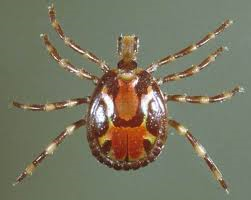Oviposition capacity and egg mass to fecundity weight ratios in laboratory cultured amblyoma variegatum fabricius, 1794 (Acari: Ixodida)
Keywords:
Ticks, characteristics, livestock, vector, oviposit, obligateAbstract
We studied the reproductive characteristics of femaleAmblyoma variegatum in the laboratory. These included variations in engorgedweight, percentage body mass due to eggs, and quantity of eggs an engorgedfemale could lay. The results showed that different volumes of blood mealswould be consumed by the same progeny of Am. variegatum female ticks leading todifferent engorged weights. The study revealed that in Am. variegatum egg masscould account for as high as 51% of the engorged body weight. The female tickcould also oviposit as high as 31,487 eggs and also as low as 2421 eggs in samestudy cohorts. The study also showed that the actual engorged weight might notreflect the actual ovipositing capacity of the tick. Only the weight of the eggmass laid determined the actual quantity of eggs.
References
George, J.E., Pound, J.M., Davey, R.B., 2004. Chemical control of ticks on and the resistance of these parasites to Acaricides. Parasitol., 129, S353-S366.
Grisi, L., Massard, C.L., Moya, B.G.E., Pereira, J.B., 2002. Impacto economic das principais ectoparasites em bovines no Brazil. A Hora Veter., 21, 8-10.
Preston, P.M., 2001. Theilerioses In: The Encyclopedia of Arthro- pod –transmitted Infections of Man and Domesticated Animals (Ed. MW Service). CABI Pu blushing, New York., USA pp487-502.
Sumption, K.J., 2001., Heartwater (Cowdriosis) In: The Encyclopedia of Arthropod-transmitted Infections of Man and Domesticated Animals (Ed. MW Service) . CABI Publishing, New York.,USA, pp53-59.
Preston, P.M., 2003. Ticks of Domestick Animals in Africa: Aguide to Identificationof Species. Atalanta, Houeten, Netherlands., Pp221.
Sonenshine, D.E., 1991. Biology of ticks. Vol.1. Oxford University Press. New York.
Stewart, N.P., Dagliesh, R.J., Tratt, T., 1981. Life cycle of tick and tick fever parasites. Queensl. Agr. J., 107, 305-308.
Springell, P.H., 1983. The Cattle tick in relation to animal production in Australia. World Anim. Rev., (FAO). 36, 1-5.
Lodos, J., Boue, O., de la Fuente, J.A., 2004. Model to stimulate the effect of vaccination against Boophilus ticks on cattle. Veter. Parasitol., 87, 315-326.
Walker, A.R.,Bouattour, A., Camicas, J.L., Estrada-Pena, A., Horak, I.G., Latif, A.A., Pegram, R.G., Preston, P.M., 2003. Ticks of Domestick Animals in Africa: Aguide to Identification of Species. Atalanta,Houeten,Netherlands, Pp221.
Zahid, I.R., Song-hua, H., Wan-ju, C., Abdullah, G.A., Chen-wen, X., 2006. Importance ofticks and their Chemical and immunological control in livestock. J. Zhej. Uni. Sci., 7, 912-921.

Published
How to Cite
Issue
Section
Copyright (c) 2014 E. Nkegbe, J. Beyuo, H. Amafu-Dey

This work is licensed under a Creative Commons Attribution-NonCommercial-NoDerivatives 4.0 International License.



